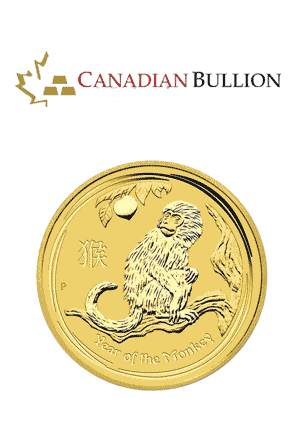Glossary - Coining a Term
The world of coins can sometimes be confusing. We’d like to make things simpler!
99999: Describes gold of extremely high purity (only 10 parts per million impurity).
9999: Describes 24-karat gold of high purity (only 100 parts per million impurity). Used to designate Gold Maple Leaf bullion coins.
Annealing: Process of heating and cooling metal strips in a low-oxygen furnace in order to relieve stresses.
Antique: A chemical toning process used for medallions which prematurely tarnishes the coin to simulate the natural darkening that occurs as metal oxidizes
with age.
Assay: To test the weight and metal purity of a coin, wafer or bar.
Blank: The blank metal disk that is eventually struck and turned into a coin.
Brilliant uncirculated: A brilliant relief is struck on a brilliant field. Brilliant uncirculated coins are struck up to two times on numismatic presses.
Bullion: Bars, ingots, plates, wafers and coins made from precious metals, usually gold or silver.
Coining: Process by which the image is struck onto blanks using a die engraved with a mirror image of the design.
Degreasing: Process by which any remaining oil residue is removed from blanks after they are washed and before they are minted.
Design: The artist’s rendering on the reverse side of a coin, along with any words, nominal values, decorative elements, colouring, hologram effect, etc.
Die: A tool that strikes an image or relief on a blank, turning it into a coin.
Effigy: A portrait found on the obverse side of a coin. Canadian coins bear effigies of the reigning monarch, Canada’s official head of state.
Engraving: An artist’s design that has been adapted and transferred to a medium that will ensure the best relief for minting.
Field: The flat part of the coin (the background) on which the relief is struck.
Finish: The appearance or surface texture of the coin’s relief.
Minting: The process of manufacturing coins.
Obverse: The ‘heads’ or face side of a coin.
Proof: Coins with a frosted relief over a brilliant field. Proof coins possess the highest-quality finish for a numismatic coin, and are usually struck twice to reveal
the smallest details of the coin’s design.
Reeding: Grooved or serrated lines found around the edge of some coins.
Relief: The relief is the raised or three-dimensional image found on a coin’s field.
Reverse: The opposite of obverse – the ‘tails’ side of a coin.
Reverse proof: High-quality proof finish in reverse: brilliant, reflective details on a frosted or slightly matte field. These coins are individually passed through the
presses. Multiple strikes are applied to achieve maximum detail and finish.
Rim: The raised portion that runs around the perimeter of a coin.
Rolling: Gold, silver and other metals for coinage start out as cast bars. They are rolled into strips, each specific to the size and thickness of the minted coin.
Specimen: A brilliant image relief is struck against a matte or lined background in order to achieve maximum visual impact. Specimen coins are struck up to two
times on numismatic presses.
Uncirculated: Either a circulation coin that has never been circulated or a coin with a brilliant field over a brilliant relief.
Washing: Process by which rimmed blanks are tumble-washed in a drum and dried by hand.

